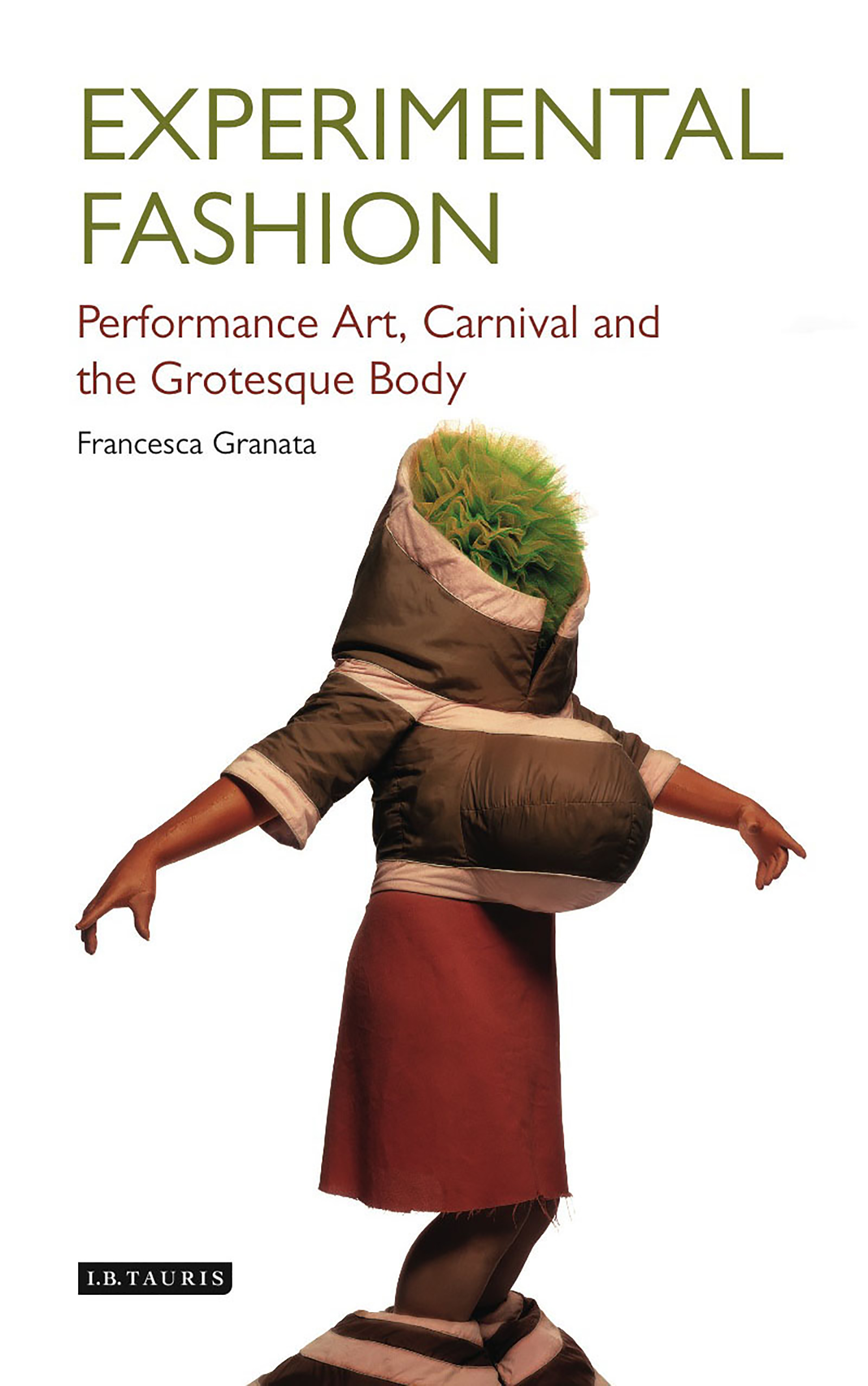Book Release—Experimental Fashion: Performance Art, Carnival, and the Grotesque Body
/by Francesca Granata
I am thrilled to announce the publication of my book, Experimental Fashion: Performance Art, Carnival, and the Grotesque Body (I.B. Tauris). Experimental Fashion is a study of designers and performance artists at the turn of the twenty-first century whose work challenges established codes of what represents the fashionable body through strategies of parody, humor, and inversion. The book argues that the proliferation of bodies-out-of-bounds in fashion during this period was influenced by feminism’s desire to open up and question gender and bodily norms and particularly the normative bodies of fashion. It was also tied to the AIDS epidemic and mediated the fears of contagion and the obsessive policing of bodily borders that characterized the period.
Starting in the 1980s, the book investigates the ways designers such as Georgina Godley challenged the masculinized silhouette of the power suit and its neoliberal exhortations, while Comme des Garçons’s Rei Kawakubo questioned the sealed classical body of fashion, in part thanks to her collaboration with choreographer Merce Cunningham and artist Cindy Sherman. Fashion designer, performance artist, and club figure Leigh Bowery upended gender codes and challenged fears surrounding the bodies of gay men through the decade. The book also examines Martin Margiela’s “deconstruction fashion” of the 1990s and the way his work challenges norms of garment construction and sizing. It enters the new millennium through the work of Bernhard Willhelm, which shows the increased cross-pollination of fashion and performance art and the renewed interest in upending codes of masculinity. The book concludes by examining how experimental fashion—particularly in its grotesque and carnivalesque variety—moved from the margins to the mainstream through the pop phenomenon of Lady Gaga.
Naturally, there are countless people to thank for helping me with the book. These include Caroline Evans, Alistair O'Neil, and Elizabeth Wilson (my dissertation advisors at Central Saint Martins); Philippa Brewster at I.B. Tauris; Kaat Debo, who allowed me to do research in the ModeMuseum Collection in Antwerp; and Andrew Bolton and Harold Koda, who granted me a one-year fellowship to do research in the Metropolitan Museum of Art's Costume. I could not be happier with the book! It can be ordered here.
For those in New York, save the date for the book launch on March 16th at Parsons School of Design at 6pm in Wollman Hall, Eugene Lang Building 65 West 11th Street, where I will be in conversation with fashion designer Bernhard Wilhelm.
























